Dive Training Blogs
Things that sting… and how to avoid them!
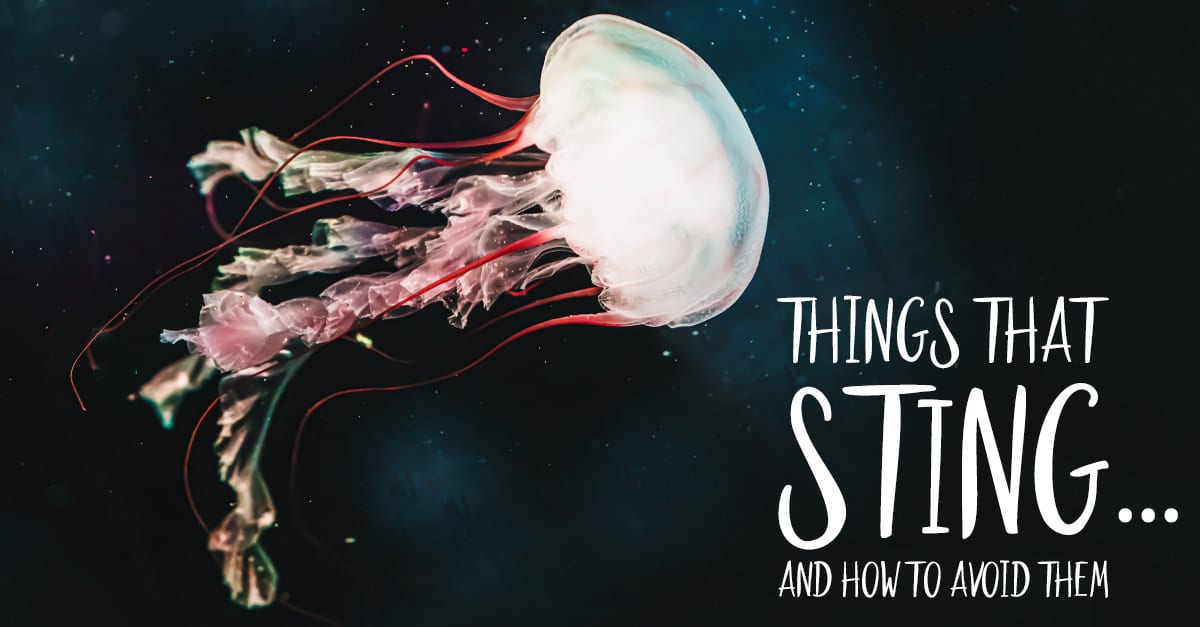
By Gemma Smith
Here be Dragons warned medieval maps, as land gave way to uncharted oceans and their mysterious inhabitants. Well, as it turns out there are dragons in the seas, but they are small and loveable (Phyllopteryx taeniolatus). No threat at all! There are however creatures who can give divers, snorkelers, swimmers and surfers painful and, at times, fatal stings. Here are some of them to look out for… but remember, these animals are only defending themselves or trying to catch their dinner!
Stingray
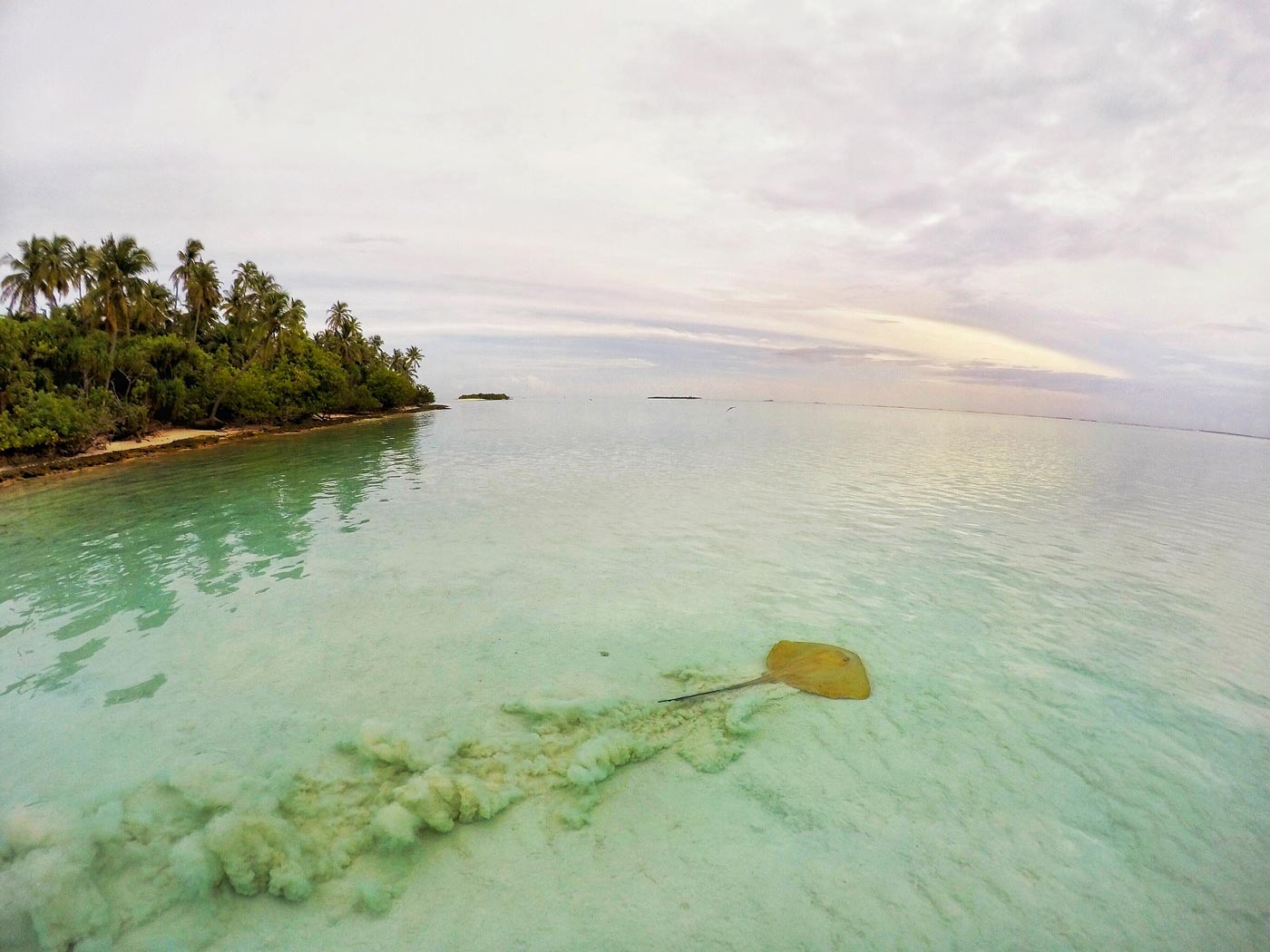
The death of Australian naturalist Steve Irwin from a stingray made international headlines in 2006. Yet it was only the second recorded stingray-induced death in Australian waters since 1945. Stingrays are not naturally aggressive but like any animal will react if frightened. Often hiding in sand to await prey, the ‘stingray shuffle’ (sliding your feet along the sand rather than stepping down hard) can alert the animals to your presence and allow them to take avoiding action.
Stingrays are common in coastal tropical and subtropical marine waters throughout the world. Some species live in the deep ocean, and there are also river stingrays. They have a venomous barb on the end of their tail which they use for defense
Stingray injuries are rarely fatal. In Steve Irwin’s infamous case, the stinger penetrated his chest cavity causing massive trauma. Nonetheless, stings are serious. They can cause pain, bleeding, nausea, weakness, and fainting. Embedded spines are best left to medical professionals to remove. This is in case the barb breaks off in the wound, which may lead to infection.
First aid includes cleaning the wound and immersing the injury in hot (40° C/104° F) water if possible for at least 30 minutes. Remember: Always seek medical attention for a stingray sting.
Weever Fish
This small fish which rests in sandy shallows near the shore punches, literally, above its weight! Its toxic dorsal spines produce acute pain if stepped on. Other symptoms are nausea, headache, and even abdominal cramps. Death is extremely rare.
As with other such injuries don’t remove embedded spines with bare hands. Always wear gloves or use tweezers! To reduce pain, immerse the foot in hot water (as above with stingray injuries). These small but potent fish live in the coastal waters of the Atlantic, North Sea, and the Mediterranean.
Jellyfish
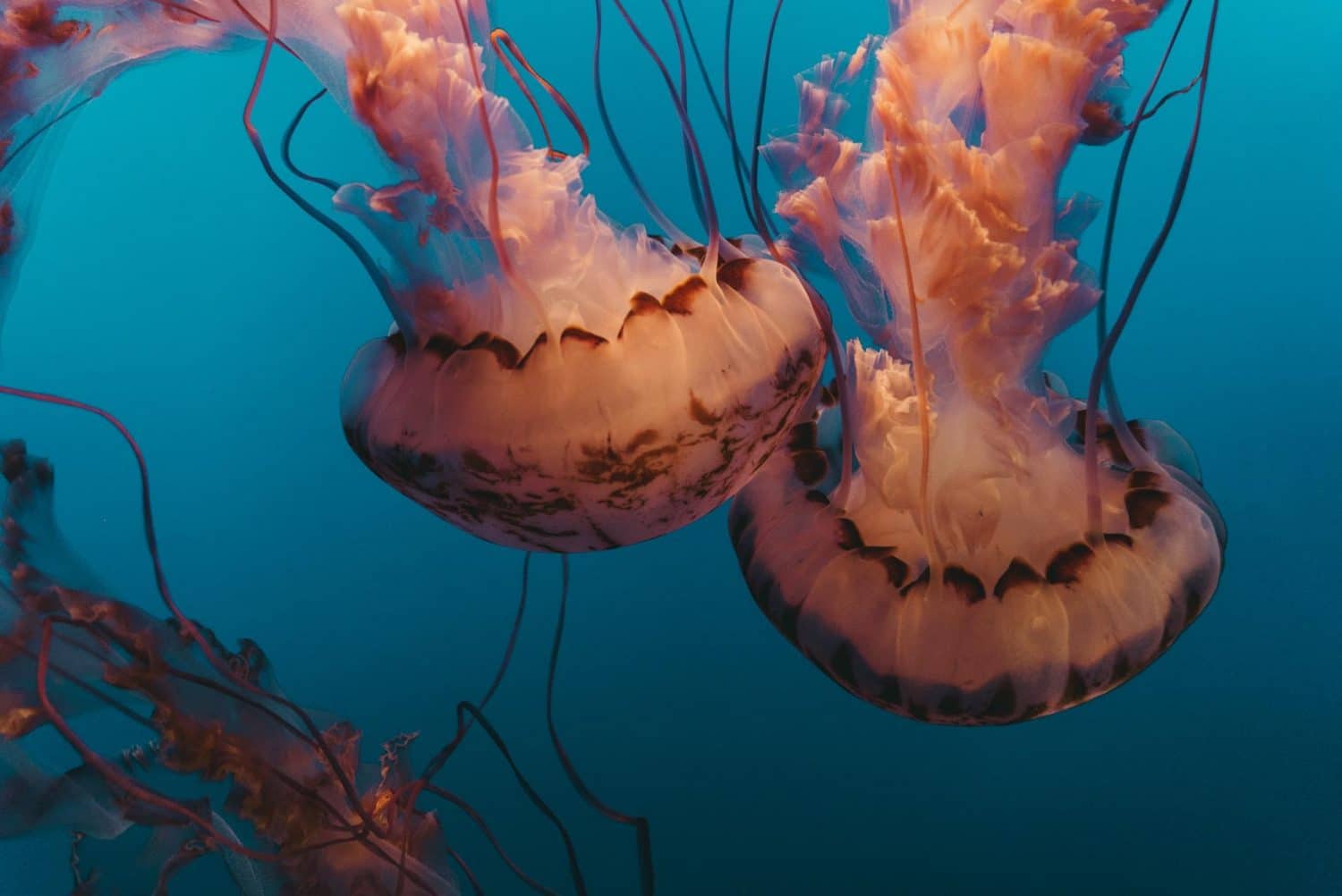
These sea creatures have tentacles covered with individual stingers called nematocysts. Jellyfish generally fire their darts into prey, but swimmers, divers, and snorkelers can be stung by physical contact. Swarms of jellyfish can also wash up on beaches.
in January 2019 about 13,000 stings were recorded on Queensland beaches from a massive influx of bluebottle jellyfish!
In May 2017 more than 300 Barrel jellyfish washed up on a beach in Wales.
So long as the stinger in the animals is still hydrated it can fire off into unsuspecting beachcombers who touch the animals. Always remove any tentacles using gloves or tweezers and, to reduce pain, immerse the affected area in hot water.
Most stings from jellyfish cause rashes and/or blisters. More acute reactions can be headaches or even chest pain. But stings from the Australian Box jellyfish and the Portuguese Man-of-War can be fatal. These need immediate emergency medical attention.
Be prepared to perform CPR in case of respiratory failure. Sea Wasp stings may prove fatal in as little as three minutes. To be safe, do your research before diving: avoid known Box Jellyfish habitats and minimize the amount of uncovered skin.
Blue-Ringed Octopus
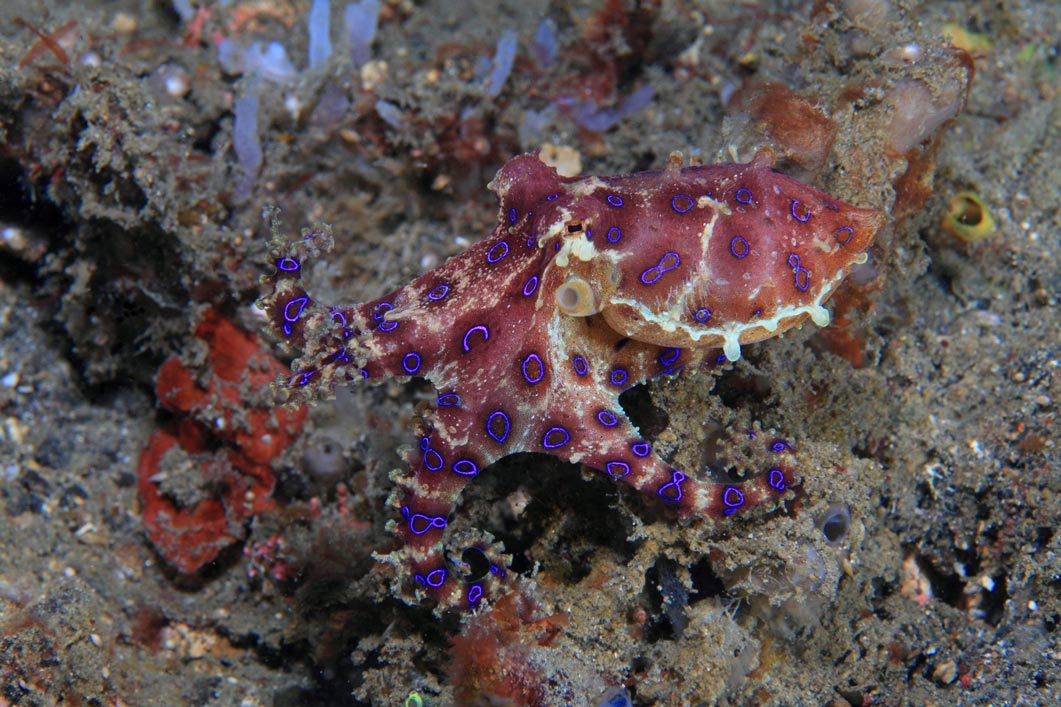
This small (12-20 cm/5-8 in) shy little octopus with its distinctive blue rings has enough venom to paralyze ten adult humans according to a University of Sydney study. Found in tide pools and coral reefs in the Pacific and Indian Oceans, it spends much of its time hiding in small crevices or abandoned shells.
If threatened, its bite is tiny and relatively painless. The venom however can cause tingling of the lips and tongue, followed by difficulty swallowing, dizziness, and headache. This can progress to paralysis and eventual respiratory distress or failure. The victim is aware something is wrong but can do nothing.
If bitten by a Blue-ringed octopus always seek medical attention. First aid is pressure on the wound (‘pressure immobilization technique’) and artificial respiration (CPR) if there are signs of respiratory failure. Hospital treatment consists of putting the victim on a medical ventilator until the patient’s own system can metabolize and secrete the venom. Luckily there are few reported deaths. With timely medical help, full recovery is the norm.
Cone snails
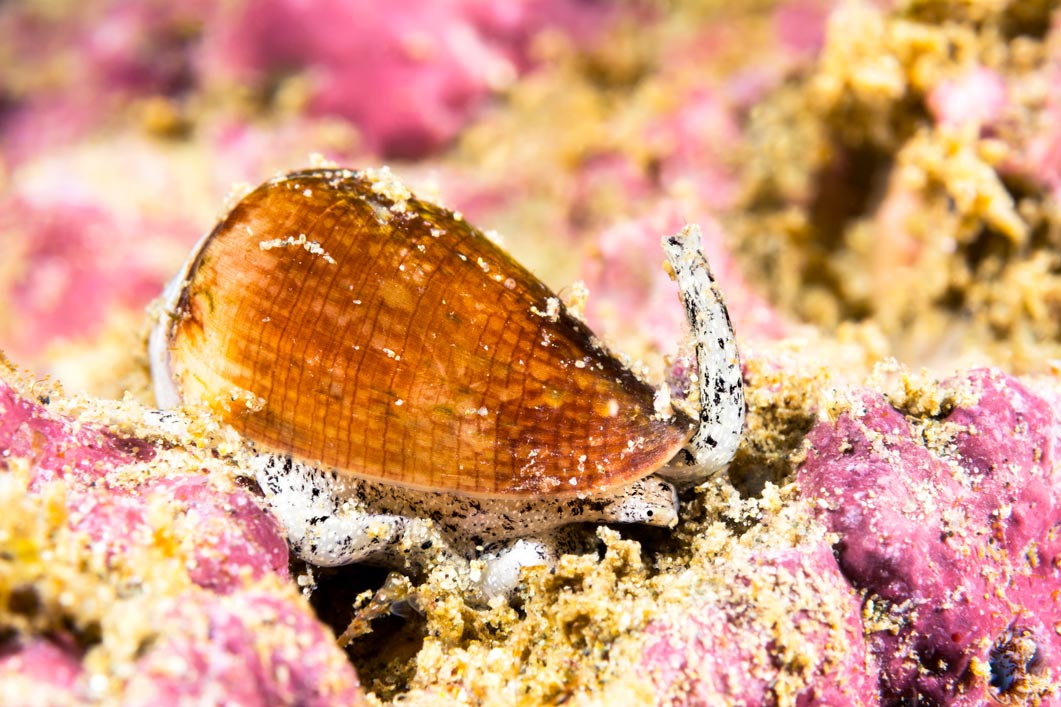
There are about 600 species of cone snail. They can be found in the Indian and Pacific Oceans, the Caribbean and the Red Sea. They live in reefs hiding themselves partially under sandy sediments. They often have beautifully patterned shells, very attractive to collectors.
All cone snails are poisonous to some degree. It is only the larger ones, up to 23 cm/9 in long, which we need to worry about. Every snail has a venom-injecting ‘tooth’; someone picks up a cone snail it responds by ‘biting’ the offender with its harpoon-like tooth.
In the case of the larger snails this tooth can sometimes penetrate gloves or wetsuits. This ‘bite’ can cause mild to moderate pain. In more serious instances numbness, blurred visions and paralysis can occur. Paralysis can sometimes lead to respiratory failure. Symptoms can appear immediately or may take a few days.
Always seek medical attention in case of a cone snail sting. First aid measures can include application of heat (such as soaking the affected area in hot water) for pain relief. Also use of the ‘pressure immobilization technique’ can help slow progression of the toxin. Watch out for symptoms appearing in succeeding days.
Finally
These marine creatures are not generally aggressive but will react if frightened, so some general rules:
- Don’t touch them. Even dead jellyfish can sting!
- Be careful where you put your hands; someone may be lurking under a rock or in a crevice or an abandoned sea shell.
- If walking in shallow water do the ‘stingray shuffle’! This gives anything hidden in the sand time to get out of the way. After all, they don’t want to waste their venom on you!
- The use of vinegar on a sting is controversial but recent research from the University of Hawaii on Man of War stings has shown that rinsing the area with household vinegar can halt discharge of more venom.
- Don’t pee on a sting. It doesn’t help!
- Don’t touch spines with bare hands
- Gently clean the wound but don’t scrub, close, or cover it
- Remember the pressure immobilization technique, and use if recommended (see below)
- Always seek medical advice if there is evidence of chest pain, difficulty in breathing or numbness, or if you are in any way concerned about the injury. Minor injuries might mask a bigger problem. Better safe than sorry!
Pressure Immobilization Technique
This technique was developed in the 1970s by an Australian medical researcher, Struan Sutherland. It was originally designed to be used on certain snake and spider bite injuries. Its purpose is to contain the spread of venom from the affected area, and prevent the venom circulating to reach the vital organs.
It is not suitable for all bites/stings whether for snakes, spiders or other creatures. It is recommended for blue-ringed octopus bites and cone snail stings. Check DAN or another reputable site to refresh your memory if diving in waters where you are likely to meet these creatures.
The procedure is generally to:
- Use an elasticated bandage, if available, to wrap the affected limb and apply firm pressure. Clothing such as a long-sleeved shirt or pantyhose can be used if nothing else is available.
- Begin by bandaging a couple of inches above the bite site and then downwards over and past the bite site to the hand or foot.
- The bandage should be snug but should not impede blood circulation.
- The limb must be kept as immobile as possible as movement will encourage blood flow.
- Splint the limb if possible or use a sling on upper limbs to further immobilize the patient.
- Above all, seek medical help!
These are a few of the problems you may encounter while diving, snorkeling, or other water-based activities. It is important to always keep your First Aid knowledge up to date, and to carry basic First Aid equipment whenever you dive. Remember, the oceans are a marvelous place full of amazing and unique creatures. Respect them, and your visits to their world will be a delight and not a disaster.
![]() To find out more about International Training, visit www.tdisdi.com.
To find out more about International Training, visit www.tdisdi.com.
Blogs
Jeff Goodman Launches Underwater Moviemaker Course with NovoScuba

Transform Your Dive Experiences into Cinematic Masterpieces
NovoScuba has partnered with acclaimed underwater filmmaker Jeff Goodman to introduce the Underwater Moviemaker Course—a revolutionary program designed to equip divers with the skills to capture the breathtaking beauty of the underwater world.
Whether you’re an aspiring filmmaker, an avid diver, or a photography enthusiast, this course offers the tools and expertise needed to create stunning underwater videos. From vibrant coral reefs to curious marine life, you’ll learn how to film, edit, and produce captivating underwater stories, all with expert guidance from a seasoned professional.
Jeff Goodman: A Legacy in Underwater Filmmaking
Jeff Goodman brings over 40 years of experience in underwater film production for television to this course. Reflecting on his career, Jeff said:
“Although technology has dramatically changed, the basics of underwater filming remain constant. This course covers crucial skills for producing great videos. Whether you’re creating professional broadcast films or high-quality hobby videos, the fundamental principles are the same.
A camera operator must master their equipment to capture those magical underwater moments effortlessly. But beyond technical know-how, underwater filmmaking is about having fun and enhancing your diving experiences. So, take your time, learn at your own pace, and enjoy this creative journey.”
About NovoScuba
Founded in 2023, NovoScuba is reshaping dive education with a comprehensive, digitally native platform. Offering cutting-edge training programs for divers at all levels, NovoScuba sets a new benchmark in the diving industry by combining innovation with accessibility.
With ISO-certified courses, a student subscription model, and multilingual support, NovoScuba ensures that dive education is inclusive and engaging. More than just a training provider, NovoScuba fosters a global community of divers committed to exploration, collaboration, and sustainability.
Join the NovoScuba Underwater Moviemaker Course Today!
Dive into the world of underwater filmmaking and start creating cinematic stories that inspire. Learn more about the course and enroll today at www.novoscuba.com/novoscuba-underwater-moviemaker-course.
EXCLUSIVE: Jeff Goodman interviews Mark Spiers, CEO of New Scuba Diving Training Agency NovoScuba
NovoScuba’s Game-Changing Approach for Dive Store Owners: WE PAY YOU!
The diving world thrives on passion and adventure, but for many dive store owners, the financial and operational challenges can be as deep as the ocean.
NovoScuba, an emerging force in the diving world, is on a mission to transform this landscape for the better. With a revolutionary approach to dive store and training agency partnerships, NovoScuba is setting new standards for how dive stores can thrive while keeping their focus on delivering exceptional diving experiences.

A New Paradigm: NovoScuba’s Bold Mission
NovoScuba’s mission is straightforward yet profound: to disrupt the traditional dynamics between dive store owners and training agencies. Traditionally, dive stores have been subjected to substantial fees charged by training agencies, for membership, materials and certifications. These costs have often placed a heavy financial burden on store owners, cutting into their profits and limiting their ability to offer competitive prices to customers.
NovoScuba flips the script by offering a model where dive stores earn money, instead of paying high fees. Dive stores receive commissions for every student they register, and their certification costs are covered. This new model not only boosts profitability but also ensures clients get top-quality training at unbeatable prices.
Financial Upsides: Earn From Student Registration
NovoScuba’s approach is simple yet revolutionary. Dive stores partnering with NovoScuba can earn commissions for every student they enroll.
Here’s how it works: For every student enrolled through NovoScuba, dive stores receive a commission. Each student enrolled will receive their e-learning materials and certification credit included in their subscription. This arrangement is a significant departure from the traditional model, where dive stores often struggle to manage high overhead costs related to training fees and certification expenses.

NovoScuba’s approach ensures that dive stores can focus on what they do best—providing top-notch diving experiences—without being bogged down by excessive financial burdens, and the need to carry large stocks of materials.
Quality Training at a Great Price
NovoScuba stands out by offering high-quality, ISO certified, training that doesn’t break the bank, in fact our students will pay less than with most competing agencies. Clients benefit from top-notch education and safety standards at competitive prices. Dive store owners can confidently promote NovoScuba’s programs, knowing they’re offering fantastic training at affordable rates. This balance of quality and affordability helps dive stores build a strong reputation and attract more customers.
Your Brand is Your Business: NovoScuba’s Commitment to Showcasing Your Identity
At NovoScuba, we understand that your brand is your most valuable asset, and we’re committed to putting it front and centre. Unlike agencies that charge high fees to promote their own brand, we believe in investing in yours. With NovoScuba, you won’t be paying to advertise someone else’s logo alone, — our focus is on showcasing your unique identity. Certifications prominently feature your brand, as well as the training agency, reinforcing your store’s image and brand every step of the way. We’re here to support and elevate your brand, ensuring that your investment directly benefits your business.
Affordable Membership: An Investment in Your Success
NovoScuba’s membership model is designed with dive store owners in mind. Membership fees are kept low and include annual Pro member fees for your team. Payment can be made monthly or annually in your local currency, avoiding the hassle of exchange rate fluctuations. NovoScuba promises no exchange rate changes without a six-month notice, ensuring financial stability and simplifying budgeting. With a membership lasting 12 months from date of joining, you’ll enjoy a full year of NovoScuba’s benefits and support.

Streamlined Operations: Simplifying Your Workload
Handling administrative tasks can be a challenge, but NovoScuba makes it easier. We’ve streamlined certification procedures and reduced paperwork to help dive stores operate more efficiently. Certification processing is quick and straightforward, allowing more focus on teaching and customer service. Our system minimises bureaucracy by storing necessary forms in student profiles, reducing paperwork and administrative delays.
Crossover Made Easy
For dive stores looking to transition to NovoScuba’s model, the crossover process is designed to be smooth and hassle-free. NovoScuba provides support to ensure that the transition is as seamless as possible, helping dive store owners integrate into the new system with minimal disruption. Experienced dive Pros don’t need to undergo extensive retraining. Our crossover is designed to familiarise Pros with NovoScuba’s user-friendly platform, standards and course structures, and not to waste time and expense re-training in water.
With just a few simple steps, you’ll be ready to offer top-notch training through NovoScuba.
Comprehensive Business Support and Training Included in Your Membership
NovoScuba goes beyond financial benefits by offering experienced support and training. This value added service includes:
- Business Training: Optimise your operations with guidance on marketing, customer service, and best practices.
- Marketing and Promotion: Access resources to attract new customers and boost your store’s visibility. Enjoy cross promotions with NovoScuba to gain increased exposure.
- Ongoing Support: NovoScuba’s commitment to its partners extends beyond initial training and setup. The company offers ongoing support to address any issues or questions that arise. This continuous support ensures that dive store owners have a reliable resource to turn to whenever they need assistance.

Embracing Digital Natives: Instant Evolution and Continuous Improvement
NovoScuba’s digital-native approach is a game-changer. Leveraging cutting-edge technology, we ensure our services evolve and improve swiftly. Dive stores benefit from instant updates, the latest features, enhancements, and effective solutions, keeping them ahead of the curve. This continuous improvement helps dive stores stay competitive and deliver exceptional services. Whether it’s a new course update, additional marketing resources, or improved e-learning functions, NovoScuba’s digital infrastructure ensures that dive stores are always equipped with the most current and effective solutions. This continuous evolution not only helps dive stores stay ahead in a competitive market but also ensures they consistently provide top-quality services to their clients.
Why Is NovoScuba Doing This? – Fair Profit Sharing for Greater Access and Growth
At NovoScuba, we’ve taken a bold step by paying commissions to stores rather than following the traditional model of training agencies charging high fees. Our mission is to make diving accessible to everyone and to foster a growing community of new divers and continued education. By redistributing profits more equitably between stores and training agencies, we aim to create a more supportive and collaborative environment within the industry. We believe this approach not only helps individual stores thrive but also stimulates overall growth and innovation in diving. Our commitment to fair profit sharing reflects our dedication to the long-term health and expansion of the diving community.

Everyone is getting a piece of the pie.
Getting Started: Join the NovoScuba Revolution
Ready to revolutionise your dive store experience? NovoScuba is here to support your journey toward reduced costs, increased profitability, and enhanced operational efficiency. Get in touch with our team to learn how NovoScuba can transform your business.
For more information, email info@novoscuba.com or visit www.novoscuba.academy.
Blogs
NovoScuba’s Game-Changing Approach for Dive Store Owners: WE PAY YOU!

 The diving world thrives on passion and adventure, but for many dive store owners, the financial and operational challenges can be as deep as the ocean.
The diving world thrives on passion and adventure, but for many dive store owners, the financial and operational challenges can be as deep as the ocean.
NovoScuba, an emerging force in the diving world, is on a mission to transform this landscape for the better. With a revolutionary approach to dive store and training agency partnerships, NovoScuba is setting new standards for how dive stores can thrive while keeping their focus on delivering exceptional diving experiences.

A New Paradigm: NovoScuba’s Bold Mission
NovoScuba’s mission is straightforward yet profound: to disrupt the traditional dynamics between dive store owners and training agencies. Traditionally, dive stores have been subjected to substantial fees charged by training agencies, for membership, materials and certifications. These costs have often placed a heavy financial burden on store owners, cutting into their profits and limiting their ability to offer competitive prices to customers.
NovoScuba flips the script by offering a model where dive stores earn money, instead of paying high fees. Dive stores receive commissions for every student they register, and their certification costs are covered. This new model not only boosts profitability but also ensures clients get top-quality training at unbeatable prices.
Financial Upsides: Earn From Student Registration
NovoScuba’s approach is simple yet revolutionary. Dive stores partnering with NovoScuba can earn commissions for every student they enroll.
Here’s how it works: For every student enrolled through NovoScuba, dive stores receive a commission. Each student enrolled will receive their e-learning materials and certification credit included in their subscription. This arrangement is a significant departure from the traditional model, where dive stores often struggle to manage high overhead costs related to training fees and certification expenses.

NovoScuba’s approach ensures that dive stores can focus on what they do best—providing top-notch diving experiences—without being bogged down by excessive financial burdens, and the need to carry large stocks of materials.
Quality Training at a Great Price
NovoScuba stands out by offering high-quality, ISO certified, training that doesn’t break the bank, in fact our students will pay less than with most competing agencies. Clients benefit from top-notch education and safety standards at competitive prices. Dive store owners can confidently promote NovoScuba’s programs, knowing they’re offering fantastic training at affordable rates. This balance of quality and affordability helps dive stores build a strong reputation and attract more customers.
Your Brand is Your Business: NovoScuba’s Commitment to Showcasing Your Identity
At NovoScuba, we understand that your brand is your most valuable asset, and we’re committed to putting it front and centre. Unlike agencies that charge high fees to promote their own brand, we believe in investing in yours. With NovoScuba, you won’t be paying to advertise someone else’s logo alone, — our focus is on showcasing your unique identity. Certifications prominently feature your brand, as well as the training agency, reinforcing your store’s image and brand every step of the way. We’re here to support and elevate your brand, ensuring that your investment directly benefits your business.
Affordable Membership: An Investment in Your Success
NovoScuba’s membership model is designed with dive store owners in mind. Membership fees are kept low and include annual Pro member fees for your team. Payment can be made monthly or annually in your local currency, avoiding the hassle of exchange rate fluctuations. NovoScuba promises no exchange rate changes without a six-month notice, ensuring financial stability and simplifying budgeting. With a membership lasting 12 months from date of joining, you’ll enjoy a full year of NovoScuba’s benefits and support.

Streamlined Operations: Simplifying Your Workload
Handling administrative tasks can be a challenge, but NovoScuba makes it easier. We’ve streamlined certification procedures and reduced paperwork to help dive stores operate more efficiently. Certification processing is quick and straightforward, allowing more focus on teaching and customer service. Our system minimises bureaucracy by storing necessary forms in student profiles, reducing paperwork and administrative delays.
Crossover Made Easy
For dive stores looking to transition to NovoScuba’s model, the crossover process is designed to be smooth and hassle-free. NovoScuba provides support to ensure that the transition is as seamless as possible, helping dive store owners integrate into the new system with minimal disruption. Experienced dive Pros don’t need to undergo extensive retraining. Our crossover is designed to familiarise Pros with NovoScuba’s user-friendly platform, standards and course structures, and not to waste time and expense re-training in water.
With just a few simple steps, you’ll be ready to offer top-notch training through NovoScuba.
Comprehensive Business Support and Training Included in Your Membership
NovoScuba goes beyond financial benefits by offering experienced support and training. This value added service includes:
- Business Training: Optimise your operations with guidance on marketing, customer service, and best practices.
- Marketing and Promotion: Access resources to attract new customers and boost your store’s visibility. Enjoy cross promotions with NovoScuba to gain increased exposure.
- Ongoing Support: NovoScuba’s commitment to its partners extends beyond initial training and setup. The company offers ongoing support to address any issues or questions that arise. This continuous support ensures that dive store owners have a reliable resource to turn to whenever they need assistance.
Embracing Digital Natives: Instant Evolution and Continuous Improvement
NovoScuba’s digital-native approach is a game-changer. Leveraging cutting-edge technology, we ensure our services evolve and improve swiftly. Dive stores benefit from instant updates, the latest features, enhancements, and effective solutions, keeping them ahead of the curve. This continuous improvement helps dive stores stay competitive and deliver exceptional services. Whether it’s a new course update, additional marketing resources, or improved e-learning functions, NovoScuba’s digital infrastructure ensures that dive stores are always equipped with the most current and effective solutions. This continuous evolution not only helps dive stores stay ahead in a competitive market but also ensures they consistently provide top-quality services to their clients.
Why Is NovoScuba Doing This? – Fair Profit Sharing for Greater Access and Growth
At NovoScuba, we’ve taken a bold step by paying commissions to stores rather than following the traditional model of training agencies charging high fees. Our mission is to make diving accessible to everyone and to foster a growing community of new divers and continued education. By redistributing profits more equitably between stores and training agencies, we aim to create a more supportive and collaborative environment within the industry. We believe this approach not only helps individual stores thrive but also stimulates overall growth and innovation in diving. Our commitment to fair profit sharing reflects our dedication to the long-term health and expansion of the diving community.

Everyone is getting a piece of the pie.
Getting Started: Join the NovoScuba Revolution
Ready to revolutionise your dive store experience? NovoScuba is here to support your journey toward reduced costs, increased profitability, and enhanced operational efficiency. Get in touch with our team to learn how NovoScuba can transform your business.
For more information, email info@novoscuba.com or visit www.novoscuba.academy.
-

 News2 months ago
News2 months agoIconic SS United States to become the World’s Largest Artificial Reef
-

 News3 months ago
News3 months agoBook Review – 52 Assignments: Underwater Photography
-

 Gear News3 months ago
Gear News3 months agoDYNAMICNORD – New German diving brand enters the British market
-

 News3 months ago
News3 months agoExploring Cenote El Pit: A Diver’s Dream
-

 Gear News3 months ago
Gear News3 months agoTry BARE drysuits (and maybe even win one!) this Friday with Sea & Sea at North West Dive Fest
-

 Marine Life & Conservation3 months ago
Marine Life & Conservation3 months agoBook Review: Coral Triangle Cameos
-

 Blogs2 months ago
Blogs2 months agoDive the Egyptian Red Sea this Autumn with Regaldive
-

 News3 months ago
News3 months ago2024 Ocean Art Underwater Photo Competition Announced
















